Sections
Key message
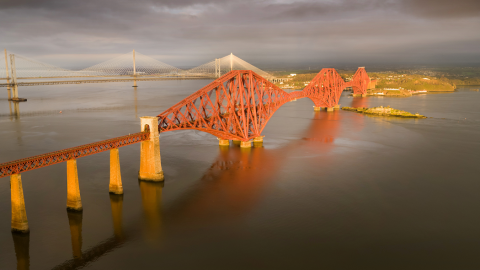
What, why and where?
The historic environment around the coast is the physical evidence of past human activity, connecting people with place, and with related traditions, stories and memories.
This cultural heritage includes remains of coastal settlements from prehistory to the modern day and built structures such as harbours, lighthouses and ship-building yards, ecclesiastical buildings, castles, war-time defences and wrecks of ships and aircraft offshore. These help create a sense of place, wellbeing and identity, enhancing the distinctiveness of the coast, attracting visitors to Scotland and contributing to the economy.
The vision for Scotland’s historic environment is that it is understood and valued, cared for and protected, enjoyed and enhanced. It is at the heart of a flourishing and sustainable Scotland and will be passed on to benefit future generations (Scottish Government, 2014).
There are many opportunities for the public to appreciate the historic environment and cultural heritage, e.g. visiting historic ships, museums with maritime exhibitions, properties in the care of Historic Environment Scotland, festivals of the sea and diving on historic wrecks.
The significance of many historic sites is recognised through various designations, e.g. World Heritage Sites, listed buildings, scheduled monuments, Historic Marine Protected Areas (MPAs) and protected military remains. The locations of these historic sites are shown in Figure 1. There are eight Historic MPAs designations: in 2013 six were designated for vessels previously protected under the Protection of Wrecks Act 1973, with a new designation for a recently discovered wreck near the village of Drumbeg, Sutherland. Another new designation was made in 2016 for the 19th century paddle steamer, Iona 1 (Figure 2), in the Firth of Clyde.
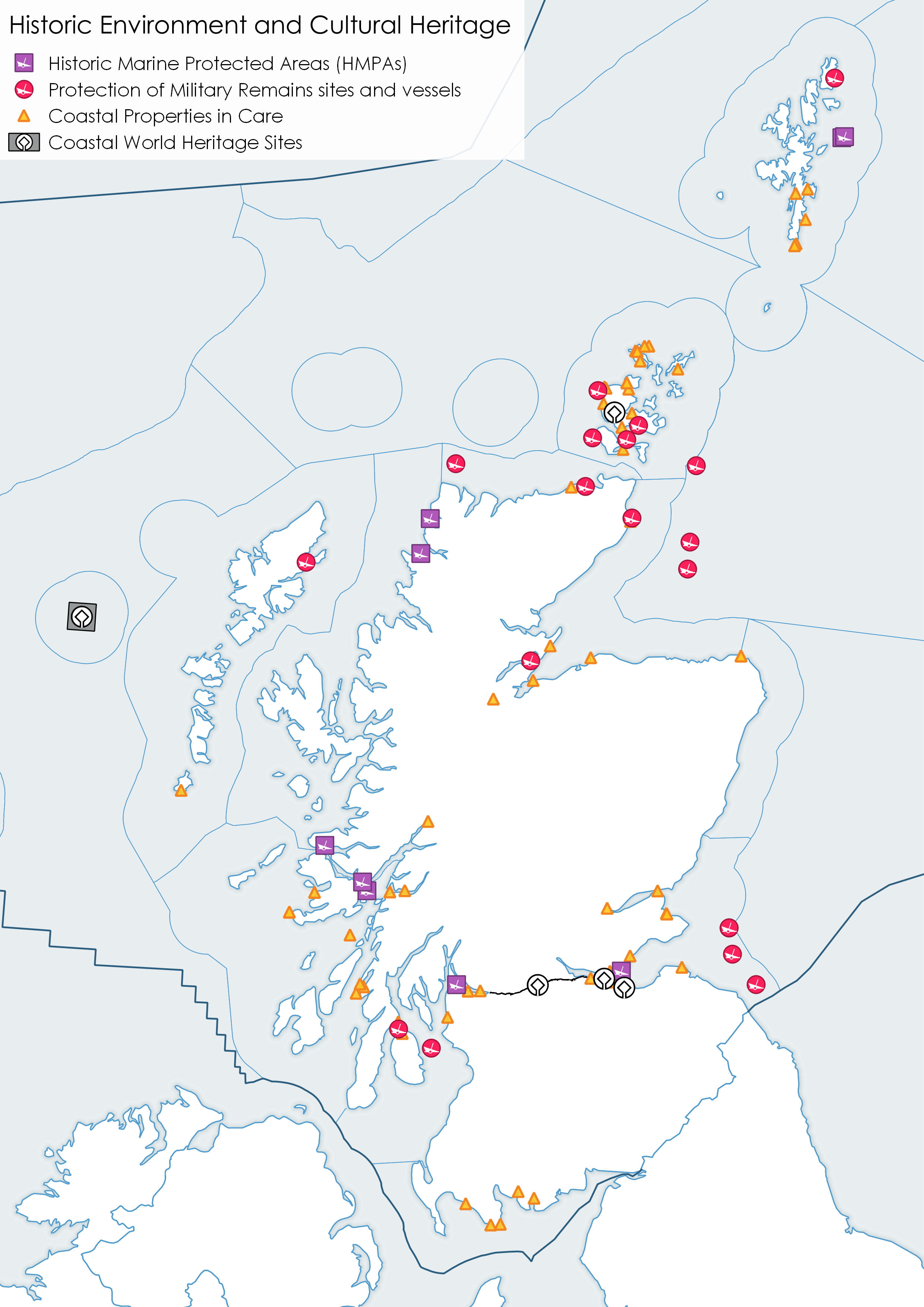
Figure 1: Distribution of Historic Marine Protected Areas, World Heritage Sites, Properties in Care and Protection of Military Remains Act wrecks.

Figure 2: Model of Iona 1, subject of the new Historic Marine Protected Area in the Clyde. © CSG CIC Glasgow Museums Collection.
In 2015 Historic Environment Scotland (HES) was established, bringing together Historic Scotland and The Royal Commission on the Ancient and Historical Monuments of Scotland. HES is the lead public body set up to investigate, care for and promote Scotland’s historic environment.
HES cares for 300 sites of national importance across the country including many sites at the coast. HES looks after internationally significant archives and artefacts and is at the forefront of investigating and researching Scotland’s historic environment and addressing the impacts of climate change on it.
|
Scottish Marine (SMR) or Offshore Marine (OMR) Region
|
World Heritage Sites (created)
|
Historic Marine Protected Areas
|
Sites and vessels designated under the Protection of Military Remains Act 1986 ("war graves") - protected wrecks
|
|
Forth and Tay
|
Antonine Wall (2008)
Forth Bridge (2015)
|
Campania (2013)
|
U 714
HMS Pathfinder
HMSM K17
HMSM K4 (probably)
HMS Fortuna
|
|
North East
|
|
|
|
|
Moray Firth
|
|
|
HMS Natal
RFA Isleford
|
|
Orkney
|
Heart of Neolithic Orkney (2001)
|
|
HMS Vanguard
HMS Royal Oak
HMS Hampshire
HMS Pheasant
|
|
Shetland
|
|
Out Skerries (2013)
|
HMSM E49
|
|
North Coast
|
|
|
HMS Beech
HMS Bullen (stern)
HMS Bullen (Bow)
|
|
West Highland
|
|
Kinlochbervie (2013)
Drumbeg (2013)
Mingary (2013)
Dartmouth (2013)
|
|
|
Outer Hebrides
|
St Kilda (2005)
|
|
HMY Iolaire (2019)
|
|
Argyll
|
|
Duart Point (2013)
|
|
|
Clyde
|
Antonine Wall (2008)
|
Iona I (2016)
|
HMS Dasher
HMSM Vandal
|
|
Solway
|
|
|
|
|
Long Forties (OMR)
|
|
|
U12
|
|
Fladen and Moray Firth Offshore (OMR)
|
|
|
HMS Lynx
HMS Exmouth
HMS Duke of Albany
|
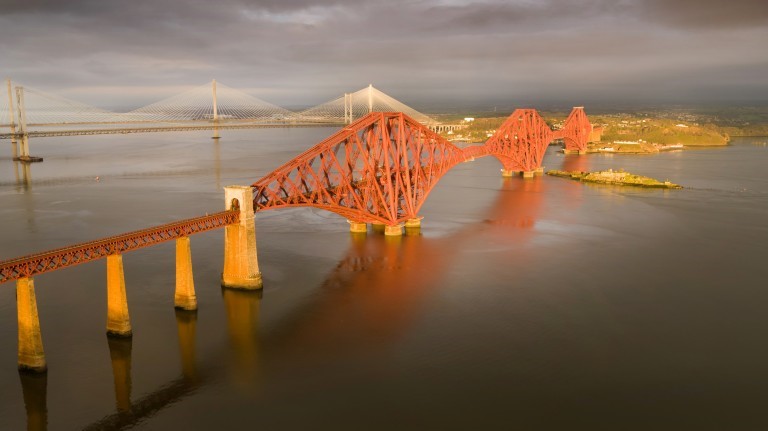
|
Scottish Marine Region (SMR)
|
Properties in care (coastal) (1)
|
Museums with maritime exhibitions (2)
|
Historic ships accessible to the public (3)
|
|
Forth and Tay
|
Broughty Castle
St Mary’s Church, Kirkheugh, St Andrews
Blackness Castle
Hunter's Craig or Eagle Rock
Elcho Castle
Inchcolm Abbey
Ravenscraig Castle
St Andrews Castle
St Bridget's Kirk
Tantallon Castle
|
Trinity House Maritime Museum
Buckhaven museum
Methil Heritage Centre
Discovery Point
St Andrews Museum,
Scottish Fisheries Museum
Crail Museum and Heritage Centre
Arbroath Signal Tower Museum Montrose Museum
Eyemouth Museum
Queensferry Museum
St Andrews Preservation Trust Museum
Kirkcaldy Galleries
The McManus: Dundee's Art Gallery and Museum
|
Bloodhound
HMS Unicorn
Lively Hope
MV Fingal
North Carr
Reaper
Research,
Royal Yacht Britannia
RRS Discovery
SS Explorer
Sula II
|
|
North East
|
Kinnaird Head Castle Lighthouse
Kinnaird Head Wine Tower
|
Stonehaven Tolbooth Museum
Aberdeen Maritime Museum
Fraserburgh Heritage Centre
Museum of Scottish Lighthouses
Arbuthnot Museum
Maggie Law Maritime Museum
|
|
|
Moray Firth
|
Burghead Well
Beauly Priory
Castle of Old Wick
Hilton of Cadboll chapel
Fort George
|
Lybster Harbour Visitor Centre
Wick Heritage Museum
Portsoy Salmon Bothy
Findhorn Village Icehouse and Heritage Centre
|
Isabella Fortuna
Jacobite Queen
Kenilworth
MV Guide
The Doctors
Wisp
|
|
Orkney
|
Brough of Birsay
Broch of Gurness
Earl’s Palace, Birsay
Knap of Howar
Links of Noltland
Hackness
Battery & Martello Tower
Mid Howe broch
Mid Howe chambered cairn
Pierowall Church
Quoyness chambered cairn
Holm of Papa Westray Chambered Cairn
Rennibister Earth House
Skara Brae
St Nicholas Church, Orphir
Westside Church, Tuquoy
|
Stromness Museum
Scapa Flow Visitor Centre and Museum
Westray Heritage Centre
Orkney Museum
|
Thomas McCunn
|
|
Shetland
|
Fort Charlotte
Jarlshof
Mousa Broch
Ness of Burgi fort
Scalloway Castle
|
George Waterston Memorial Museum
Hoswick Visitor Centre
Fetlar Interpretative Centre
Unst Boat Haven
Scalloway Museum
Tangwick Haa Museum
Shetland Museum and Archives
|
Loki
Swan
|
|
North Coast
|
St Mary's Chapel, Crosskirk
|
|
|
|
West Highland
|
Inverlochy Castle
|
Mallaig Heritage Centre
Bright Water Visitor Centre
Gairloch Heritage Museum
Ullapool Museum
Ardnamuchan Lighthouse Exhibition Centre
|
Aurelia
MV Glenachulish
Souter's Lass
|
|
Outer Hebrides
|
Kisimul Castle
|
Comunn Eachdraidh Uig (Uig Museum)
Bernera Museum
Museum nan Eilean (Lews Castle)
Comunn Eachdraidh Nis (Ness Historical Society)
|
|
|
Argyll
|
Ardchattan Priory
Castle Sween
Dunstaffnage Castle & Chapel
Eileach-an-Naoimh monastery
Eilean Mor (St. Cormac’s Cave, Chapel and related remains)
Inch Kenneth Chapel
Iona Nunnery
Keills Chapel & Cross
Maclean’s Cross, Iona
|
Museum of Islay Life
Mull Museum
Oban War and Peace Museum
Skerryvore Lighthouse Museum
|
VIC 32
|
|
Clyde
|
Lochranza Castle
Skipness Chapel
Dumbarton Castle
Newark Castle
Skelmorlie Aisle
|
Bute Museum
McKechnie Institute
Scottish Maritime Museum
Denny Ship Model Experimental Tank
Clydebank Museum & Art Gallery
The Tall Ship at Riverside
|
Arctic Penguin
Carola
Garnock
Glenlee
Golden Orfe
Jane Anne
Kelvinhaugh
Kentra
Kyles
Misty Isle
Queen Mary
Sceptre
Shemaron
Skylark IX
Spartan
The Second Snark
Waverley
|
|
Solway
|
Cardoness Castle
Chapel Finian
Maclellan’s Castle
Barsalloch Fort
Carsluith Castle
St Ninian's Cave
St Ninian’s Chapel
|
John Paul Jones Cottage Museum and Visitor Centre
|
|
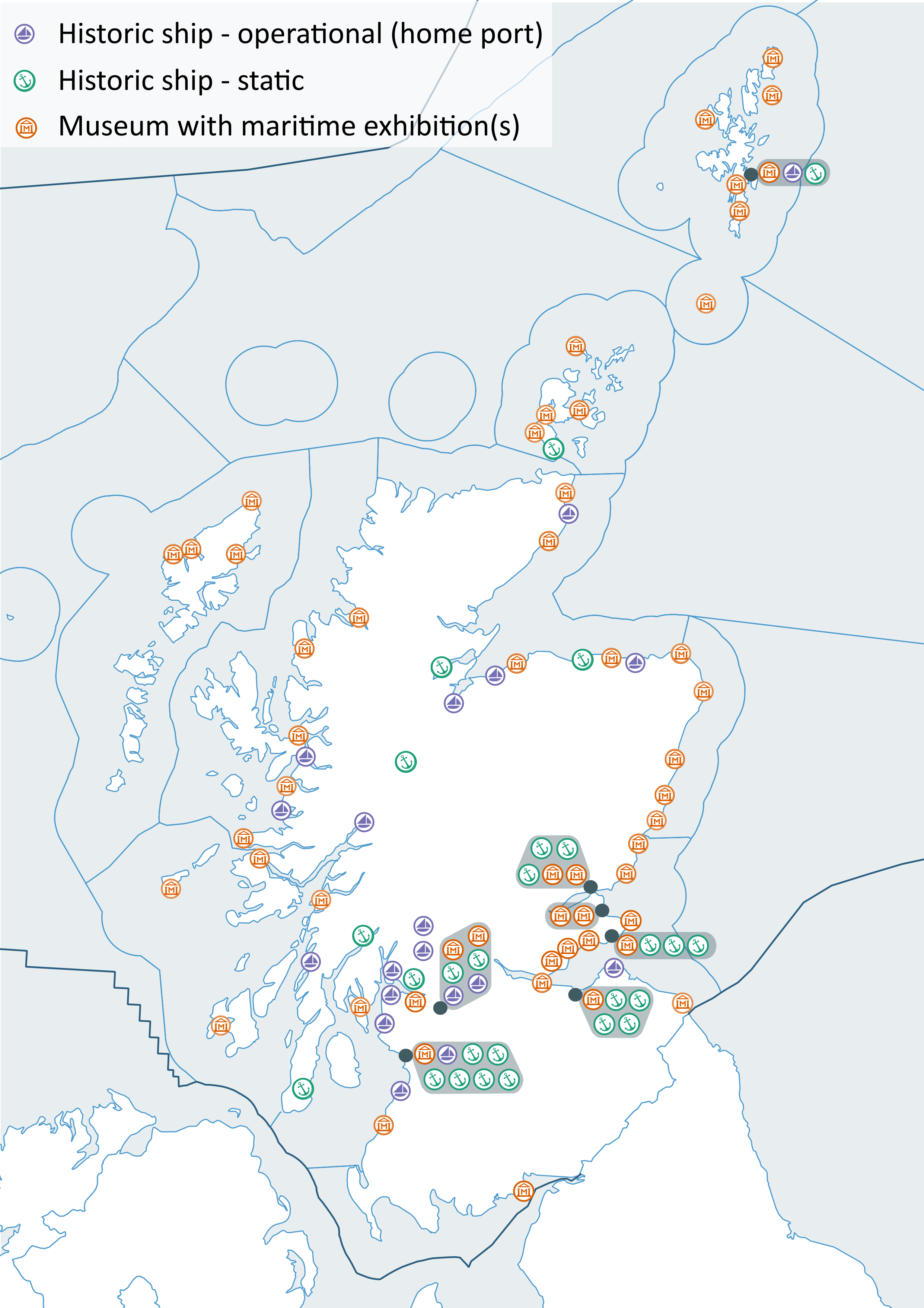
Source: National Historic Ships UK and Scottish Government.
|
Scottish Marine (SMR) Region
|
Listed buildings (number per SMR)
|
Examples
|
Scheduled monuments
(number per SMR)
|
Examples
|
Recorded coastal heritage sites (number per SMR)
|
|
Forth and Tay
|
42
|
Bell Rock lighthouse
Forth Bridge
|
4
|
Kilspindie fishing vessels, Aberlady Bay
|
3,820
|
|
North East
|
11
|
Peterhead Harbour
|
0
|
|
1,665
|
|
Moray Firth
|
26
|
Rosehearty Harbour
|
6
|
Marine crannogs, Beauly firth
|
2,177
|
|
Orkney
|
7
|
Kirkwall Harbour
|
2
|
7 wrecks of German high Seas Fleet, Scapa flow
|
2,268
|
|
Shetland
|
10
|
Hay’s dock and storehouse, Lerwick
|
5
|
Maiden Stack, settlement, Papa Stour
|
1,408
|
|
North Coast
|
2
|
Thurso Bridge
|
1
|
Castle Mestag, fortified sea-stack, Stroma
|
535
|
|
West Highland
|
15
|
Dunvegan Bridge
|
5
|
Loch na h-Airde canal, harbour and noosts, Rubha an Dunain, Isle of Skye
|
1,478
|
|
Outer Hebrides
|
4
|
Pier, West Loch Tarbert, Harris
|
8
|
Rubha nan Sidhean, cupmarked rocks and fish trap, Kirkibost
|
1,690
|
|
Argyll
|
15
|
Hynish harbour, Tiree
|
5
|
Eriska, crannog on S shore of
|
1,607
|
|
Clyde
|
41
|
Troon harbour,
Broomlielaw bridge, Glasgow
|
7
|
Newshot Island, River Clyde, remains of diving support vessel and dredging barges.
|
3,375
|
|
Solway
|
15
|
Mull of Galloway harbour
|
1
|
Garlieston Mullberry harbour remains
|
1,337
|
HES is responsible for designating listed buildings and scheduled monuments (Table c) around the coast and advises the Scottish Government on the designation of historic MPAs (Table a) under the Marine (Scotland) Act 2010, for designations within territorial waters (up to 12 nautical miles).
All military aircraft wrecks are automatically designated as Protected Places under the Protection of Military Remains Act 1986. Vessels may be designated as either a Protected Place or a Controlled Site (Table a). Divers can visit a Protected Place on a ‘look but don’t touch’ basis. Divers may not visit a Controlled Site without a licence. The UK Ministry of Defence administers the Act: the RAF for aircraft, the Royal Navy for vessels.
Cultural heritage sites can be considered in two categories. First, those which lie wholly within the marine environment, on the foreshore or under water, such as harbours, marine crannogs, and shipwrecks. Second, those on land, where the sea forms an integral part of their identity such as lighthouses and coastal castles, as well as maritime museums. For the purpose of this work, coastal sites are those on the foreshore or on land within 150 m of mean high water mark (MHWS).
Marine planning is also an important tool to help support cultural heritage work. The National Marine Plan (Scottish Government, 2015) included the following general policy (GEN 6) for the historic environment ‘Development and use of the marine environment should protect and, where appropriate, enhance heritage assets in a manner proportionate to their significance.’
Visitors to the historic environment and cultural heritage assets
HES leads the biennial Scotland’s Historic Environment Audit (SHEA) – an assessment of Scotland’s historic environment. The figures cover the historic environment as a whole and are not maintained solely for coastal and marine heritage. Heritage sites (not necessarily marine sites) attracted 18 million visitors in 2018 (up from 16 million in 2016). In 2017-18, HES alone welcomed over 5 million paying visitors and over 7 million visitors to unpaid sites (HES, 2018).
Another source of socio economic, as well as spatial, data useful for this assessment is the Scotland’s Marine Recreation and Tourism Survey (2015) (SMRTS) (Scottish Government, 2016). This was designed to gather information for 23 different recreation and tourism activities undertaken at sea or around the Scottish coastline. 923 people provided spatial information on their visits to historic sites and other visitor attractions showing where around Scotland people undertake visits to historic sites (Figure c).
However, of these, only 3% identified visits to historic or cultural heritage sites as one of their most important activities, meaning that the historic environment is not a key driver for visits to the coast. Nonetheless, the presence of historic and cultural heritage was by far the most important factor influencing where to go. Other important factors included attractive scenery, the possibility of seeing wildlife, the range of other things to do and availability of cafés, shops and restaurants.
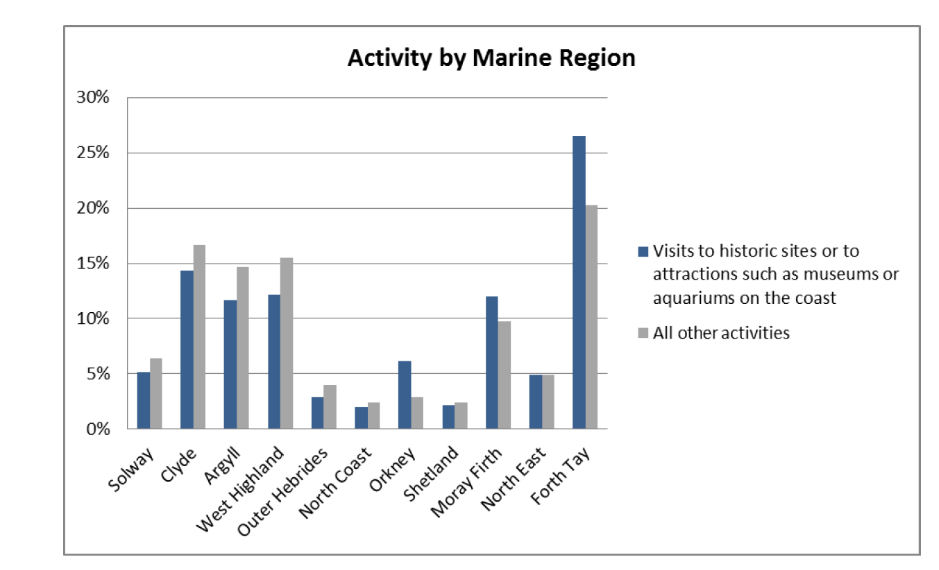
The SMRTS survey also gathered information about SCUBA diving in the sea, popular for visits to historic wrecks, gaining responses from 168 people: enough for a robust sample. By far the most important factor in selecting where to go was the occurrence of good dive sites. Other factors included opportunities to see wildlife, the presence of facilities for diving and the quality of local scenery. A little over 10% of these divers said the presence of historic or cultural heritage was very important to them, but it was not important to over 30% of the respondents.
The Moffat Centre for Travel & Tourism Business Development (Glasgow Caledonian University) prepares a Visitor Attraction Monitor (by subscription). This provides information on visitors to attractions across Scotland. A specific marine version of the monitor was produced showing attractions within 2 km of the coast and presented by Scottish Marine Region (SMR). The categories of Museums/Art Galleries, Castles/Forts, Historic Houses/Palaces, Heritage Centres and Other Historic Properties are explicitly part of the historic environment (though historic attractions may also appear under other categories). Figures from the Visitor Attraction Monitor (see under Contribution to the economy) represent only those who responded to the survey. As such, the figures are not necessarily representative of all Scottish attractions and are not a complete record of all attractions in Scotland.
The Visitor Attraction Monitor reported 9.6 million visits to Museums/Art Galleries, Castles/Forts, Historic Houses/Palaces, Heritage Centres and Other Historic Properties in 2018, a slight reduction (3%) on 2017 (Table d). The reduction results from a reduction in visits to museums and art galleries which dropped from 7.3 million visits to 6.7 million; visits to the other historic attractions all increased, though there are many fewer of these than visits to museums and art galleries.
|
Attraction type
|
Visits 2016
|
Visits 2017
|
Visits 2018
|
|
Museums/Art Galleries
|
7,046,961
|
7,283,308
|
6,672,659
|
|
Castles/Forts
|
761,111
|
853,556
|
990,940
|
|
Other Historic Properties
|
715,713
|
801,488
|
805,464
|
|
Historic Houses/Palaces
|
538,989
|
621,920
|
694,585
|
|
Heritage Centres
|
341,914
|
353,957
|
460,024
|
|
|
9,404,688
|
9,914,229
|
9,623,672
|
Condition of the historic environment and cultural heritage assets
HES holds monitoring data in relation to the condition of scheduled monuments and historic marine protected areas. These give an indication of their vulnerability to a wide range of man-made and natural processes. Since 2011 there have been two assessments that relate to the condition of historic sites around our coast.
The 2018 Marine Protected Areas report to the Scottish Parliament (Scottish Government, 2018) includes information describing progress towards preservation objectives of Scotland’s 8 Historic MPAs. Information based on monitoring surveys gives an indication of the trajectory in survival and site condition of marine historic assets within each historic MPA. In 2018, 4 Historic MPAs were considered to be in stable condition (Duart Point; Mingary; Drumbeg; Out Skerries), 1 in stable to declining condition (Dartmouth), and 3 in unknown condition (Kinlochbervie; Campania; Iona I).
HES has advised (pers. comm) that, based on its internal monitoring programme for scheduled monuments, results indicate that 88% of all scheduled monuments were in satisfactory condition over the period 2012-2017. While there were some regional variations, the overall figure for coastal scheduled monuments (on the foreshore or within 150 m of MHW) in satisfactory condition was the same: 88%.
It is clear that proximity to the coast has a complex relationship with scheduled monument condition. There are higher levels of unsatisfactory condition near the coast in some areas, but, marine erosion is not the main cause of damage recorded for coastal monuments. More prevalent causes of damage include ‘masonry decay’ and ‘tree/scrub regeneration’.
Ministry of Defence owned wrecks posing a potential environmental or safety risk are managed by Salvage and Marine Operations (SALMO) under their Wreck Management Programme (WMP). Notably, SALMO are responsible for managing the wreck of the battleship HMS Royal Oak in Scapa Flow. Significant quantities of oil have been removed from the wreck in a series of operations stretching over several years and the wreck is currently being monitored on a regular basis.
Contribution to the economy
Scotland’s historic environment and cultural heritage is a unique asset that attracts millions of visitors each year and generates income and jobs across Scotland (HES, 2018) although the full extent of this contribution can be difficult to measure. Many heritage sites (e.g. historic harbours and lighthouses) are in commercial use and others generate economic value from tourism.
Scotland’s Historic Environment Audit (SHEA) is an assessment of the historic environment (not necessarily marine related). The database includes statistics on the contribution to the economy, as well as Scotland’s heritage assets and details of how these are changing over time.
SHEA 2018 figures indicate that Scotland’s historic environment generated £4.2 billion (direct and indirect) for Scotland’s economy in 2017 (an increase from £3.4 billion in 2014) (HES (2018)).The direct contribution was estimated to be £2.3 billion in 2017 (Table 1). This contribution increased from 2014 to 2017 from £1.8 billion to £2.3 billion. In 2018, HES employed almost 1,300 staff (full time equivalent), while the many associated organisations employed many more, in addition to the seasonal staff and volunteers.
|
|
2014 |
2015 |
2016 |
2017 |
Change |
|
Amount (£) generated by HE for Scottish Economy (direct only) |
£1.8bn |
£1.9bn |
£2.1bn |
£2.3bn |
Increase 2017 on 2014 |
Scotland’s Marine Recreation and Tourism Survey (SMRTS) (Scottish Government, 2016) surveyed activities that are marine related, many of which, though not all, are based around the historic environment or cultural heritage. The SMRTS findings indicated that activities such as scenic drives, bus tours, and visits to historic sites, museums and other visitor attractions around the coast account for around £230 million of annual expenditure on marine recreation and tourism activities.
There is no Gross Value Added (GVA) information specifically for historic environment and cultural heritage. However, as many historic sites generate income from tourism, information on the GVA contribution from marine tourism can be used to provide indicative information. The GVA contribution from marine tourism increased by 30% between 2011 and 2017 (Scottish Government, 2019). Further information on marine tourism and trends by SMR are available and are included in the marine tourism section. However, this covers all tourism and is not restricted to the historic environment and cultural heritage.
Some sites, including shipwrecks offshore, can be visited for free, so do not contribute directly to the economy, but do support jobs (for example, scuba diving in the Sound of Mull and Orkney where interest is significantly based on shipwreck diving). The heritage tourism sector provides employment for staff with particular skills and knowledge including craftsmen and curators, as well as shop staff and guides.
The historic environment also contributes to less tangible social benefits such as education, health and well-being: figures by HES state that those who visited a historic site were over 50% more likely to report a high life satisfaction. (HES, 2018).
The SHEA database includes figures for employment in HES and other relevant organisations.
|
|
2013
|
2014
|
2015
|
2016
|
2017
|
2018
|
Change
|
Notes
|
|
FTE staff employed by HES
|
1,128
|
1,070
|
1,093
|
1,088
|
1,175
|
1,274
|
Increase 2018 on 2012
|
Average FTE staff number in year. Source HES Annual Report, 2017-18
|
|
FTE staff employed by NTS (permanent staff)
|
472
|
456
|
503
|
485
|
502
|
441
|
Decrease 2018 on 2012
|
|
|
NTS (seasonal staff)
|
|
328
|
336
|
310
|
645
|
661
|
Increase 2018 on 2014
|
|
|
FTE staff employed by small voluntary sector organisations (BEFS members with HE focus, excl NTS)
|
|
61.9
|
64.7
|
47.2
|
|
59.7
|
Decrease 2018 on 2014
|
Not actively collected before 2014
|
|
FTE staff employed by Heritage Trusts (non BEFS Members)
|
|
|
|
|
|
12.4
|
No trend data
|
Not actively collected before 2018
|
|
Archaeologists employed in Scottish LAs
|
27.2
|
22.7
|
25.2
|
24.5
|
19.4
|
21.4
|
Decrease 2018 on 2013
|
Not actively collected before 2013
|
|
Number of members (organisations) CIfA
|
265 (7
orgs) |
308 (10
orgs) |
316 (10
orgs) |
260 (17
orgs) |
|
|
Increase 2016 on 2012
|
Not actively collected before 2012
|
|
Number of members of IHBC Scotland
|
169
|
176
|
180
|
173
|
183
|
198
|
Increase 2018 on 2012
|
Not actively collected before 2012
|
NTS – National Trust for Scotland
CIfA - Chartered Institute for Archaeologists
IHBC - Institute of Historic Building Conservation
BEFS - Built Environment Forum Scotland
LA – Local Authority
The SMRTS survey (Scottish Government, 2016) reported that:
- 43 business respondents stated that their business serves visits to historic sites and other visitor attractions. Figure d shows the distribution of businesses across Scottish Marine Regions (SMRs). However, this survey is based on a small sample and the results should, therefore, be treated with caution.
- A median spend of around £70 per person per day during visits to historic sites and other visitor attractions at the Scottish coast. Again, this value should be treated with caution as the number of respondents to this section of SMRTS was not high.
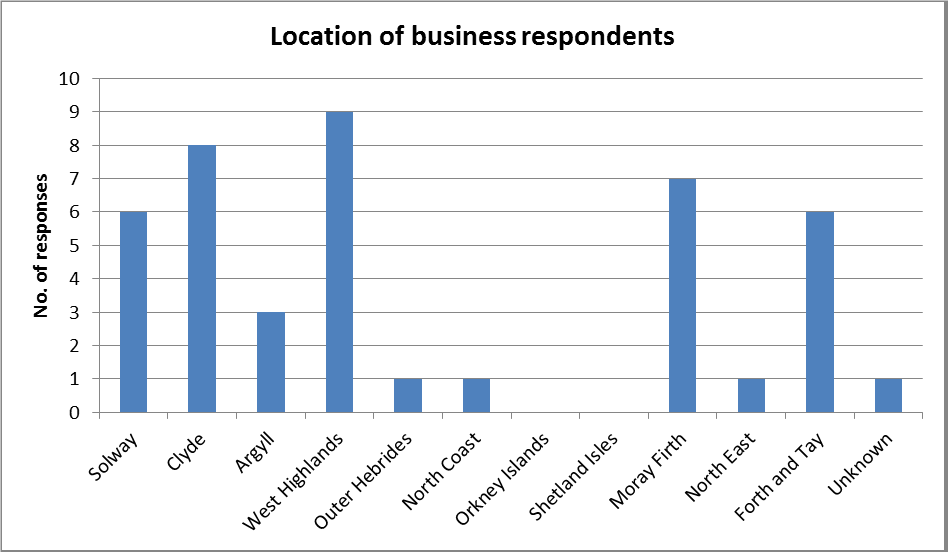
Source: SMRTS 2015 Appendix 3 (Scottish Government, 2016).
Examples of socio-economic effects
- Full and part-time employment, often in coastal rural areas.
- Domestic and international visitor tourism.
- Formal and informal education and recreation.
- Many important heritage sites continue in use e.g. lighthouses and harbours.
- Wrecks may obstruct other sea users e.g. snagging nets.
- 20th century wrecks can pose potential pollution risk.
- Spatial footprint of important heritage assets may restrict areas for new development.
Pressures on the environment
An OSPAR agreed list of marine pressures is used to help assessments of human activities in the marine environment. The marine pressure list has been adapted for use in Scotland via work on the Feature Activity Sensitivity Tool (FeAST). Historic environment & cultural heritage activities can be associated with 11 marine pressures – please read the pressure descriptions and benchmarks for further detail.
The list of marine pressures is used to help standardise assessments of activities on the marine environment, and is adapted from an agreed list prepared by OSPAR Intercessional Correspondence Group on Cumulative Effects (ICG-C) (see OSPAR 2014-02 ‘OSPAR Joint Assessment and Monitoring Programme (JAMP) 2014-2021’ Update 2018’ (Table II).
The Feature Activity Sensitivity Tool (FeAST) uses the marine pressure list to allow users to investigate the sensitivity of Scottish marine features. It also associates all pressures that might be exerted by a defined list of activities at a particular benchmark. The extent and impact of each pressure from a given activity will vary according to its intensity or frequency. The extent and impact of the pressure will also vary depending on the sensitivity of the habitat or species on which it is acting. The existence of multiple activities, and potentially multiple pressures, at specific locations will result in a cumulative impact on the environment.
FeAST is a developing tool. A snap shot from 2019 was used for the development of SMA2020. Please consult the FeAST webpage for further information and up to date information.
The list of pressures below associated with this activity is given in alphabetical order. Clicking the pressure will give you more information on the pressure and examples of how it may be associated with the activity.
Forward look
The historic environment around the coasts and seas is vulnerable to a wide range of marine activities, developments and natural processes. Some change is inevitable, and a degree of change can be necessary for places to thrive. Careful management is needed to protect the historic and cultural heritage. Caring for the historic environment benefits everyone, now and in the future.
The growing awareness of the potential impacts of climate change is set out in A Guide to Climate Change Impacts (HES, 2019). These range from damage caused by spread of invasive species into new areas (e.g. Blacktip shipworm) to wooden shipwrecks; increased rates of corrosion in metal shipwrecks (such as the wartime wrecks in Scapa Flow), structures and artefacts, rapid exposure/erosion of heritage assets and increased wave heights leading to disturbance of underwater heritage.
The Dynamic Coast project identified 11.5% of Scotland’s coast with high erosion susceptibility, with significant implications for Scotland’s communities and heritage in light of sea level rise and increased storminess.
Two Historic Marine Protected Areas are currently under consideration (Scapa Flow; Queen of Sweden, Shetland) for possible designation.
There has been a general increase in visitors to historic sites but this trend may reverse in the short term given the current economic climate. Underwater heritage remains accessible to relatively few, but digital technology is presenting new opportunities to promote this resource beyond the diving world.
Economic trend assessment
There are some data sources which provide a feel for the trend of the historic environment and cultural heritage, however, there are a number of reasons why this cannot be a precise measure and the trends need to be considered with caution. It has not been possible to disaggregate estimates for any regions, only for the national picture.
1. HES estimates the amount generated by HE for Scottish Economy (direct only) (HES, 2018). This contribution increased by £0.5 billion from 2014 to 2017 from £1.8 billion to £2.3 billion. This covers all HES records, not just marine records.
2. Considering the category of ‘Historic environment and cultural heritage’ as a sub-set of marine tourism, the overall trend of the GVA contribution from marine tourism increased by 30% between 2011 and 2017, while employment increased by 14% (Scottish Government (2019)). Trends of tourism by SMR are available and are included in the marine tourism section of the 2019 report. However, this covers all tourism and is not restricted to the historic environment and cultural heritage.
3. From data on visits to historic/cultural marine attractions, the latest results suggest a slight fall (3%) in visitors between 2016 and 2018, though specifically historic attractions have shown an increase. Sample sizes are too small to be able to produce a reliable estimate of regional trends in visitors to historical / cultural attractions by SMR.
While the various data sources do not provide an entirely clear trend, when they were considered on the basis of monetary contribution to the economy the trend is of an increasing contribution. The societal value has therefore not been addressed in this assessment.
Based on various data sources that provide an indicative trend rather than a precise measure, so should be treated with caution.
This Legend block contains the key for the status and trend assessment, the confidence assessment and the assessment regions (SMRs and OMRs or other regions used). More information on the various regions used in SMA2020 is available on the Assessment processes and methods page.
Status and trend assessment
|
Status assessment
(for Clean and safe, Healthy and biologically diverse assessments)
|
Trend assessment
(for Clean and safe, Healthy and biologically diverse and Productive assessments)
|
||
|---|---|---|---|
 |
Many concerns |
No / little change |
|
 |
Some concerns |
Increasing |
|
 |
Few or no concerns |
Decreasing |
|
 |
Few or no concerns, but some local concerns |
No trend discernible |
|
 |
Few or no concerns, but many local concerns |
All trends | |
 |
Some concerns, but many local concerns |
||
 |
Lack of evidence / robust assessment criteria |
||
| Lack of regional evidence / robust assessment criteria, but no or few concerns for some local areas | |||
 |
Lack of regional evidence / robust assessment criteria, but some concerns for some local areas | ||
| Lack of regional evidence / robust assessment criteria, but many concerns for some local areas | |||
Confidence assessment
|
Symbol |
Confidence rating |
|---|---|
|
Low |
|
|
Medium |
|
|
High |

Assessment regions

Key: S1, Forth and Tay; S2, North East; S3, Moray Firth; S4 Orkney Islands, S5, Shetland Isles; S6, North Coast; S7, West Highlands; S8, Outer Hebrides; S9, Argyll; S10, Clyde; S11, Solway; O1, Long Forties, O2, Fladen and Moray Firth Offshore; O3, East Shetland Shelf; O4, North and West Shetland Shelf; O5, Faroe-Shetland Channel; O6, North Scotland Shelf; O7, Hebrides Shelf; O8, Bailey; O9, Rockall; O10, Hatton.



